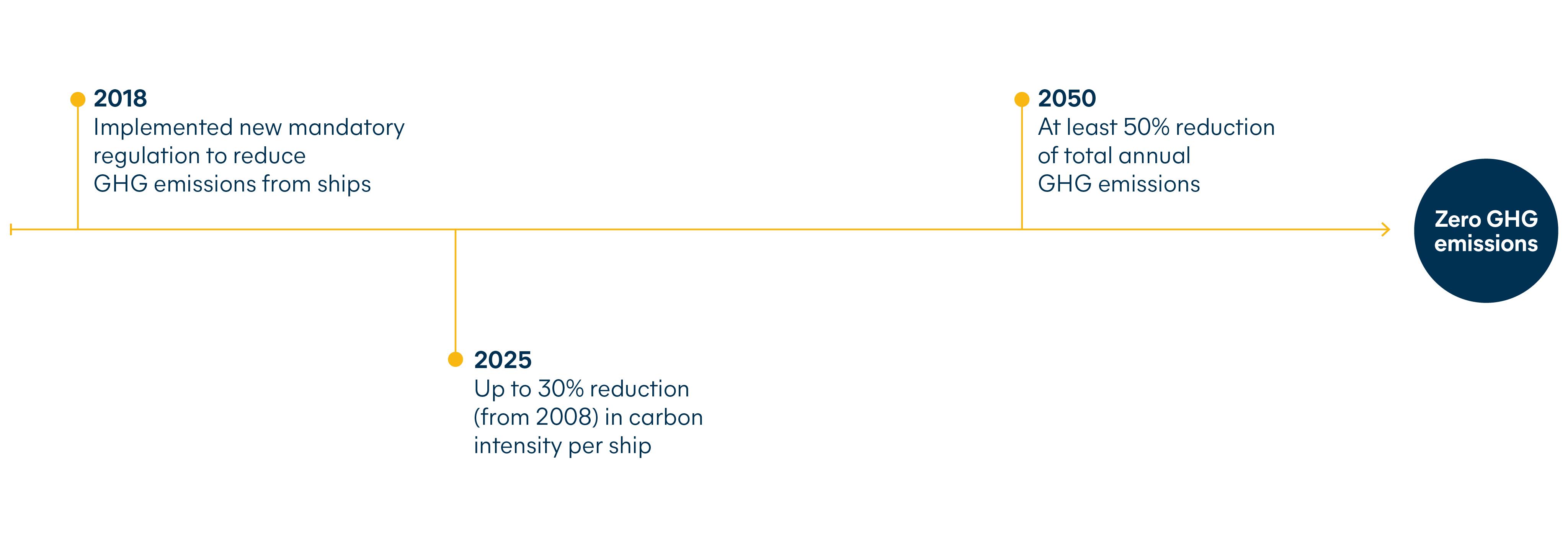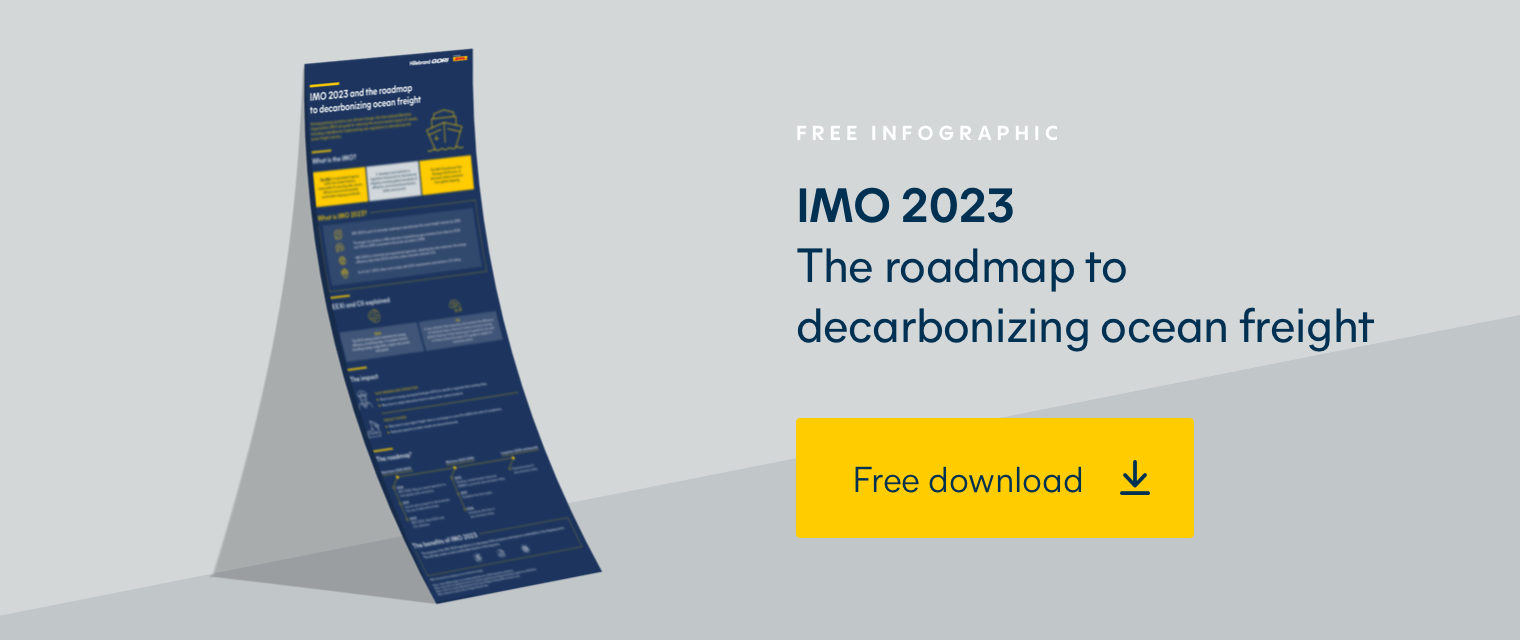How to decarbonize transport in the shipping sector?
With climate change at the forefront of global concerns, there’s an urgent need to decarbonize transport in the shipping sector.
This means reducing emissions and moving towards a zero-carbon future. But before we can do that, it’s important to understand the industry’s current state and what decarbonizing transportation means.
What is transportation decarbonization?
At its most basic level, decarbonizing transport means reducing the amount of greenhouse gases (GHG) in our atmosphere.
GHG, produced by burning fossil fuels, is the main cause of climate change, leading to warmer temperatures and environmental disasters such as floods, heat waves and storms.
We can achieve decarbonizing transport in a variety of ways, such as:
- Improving vehicle efficiency
- Leveraging autonomous vehicles and vehicle sharing
- Using lower-carbon fuels
- Switching transport modes or introducing new ones like high-speed rail
World leaders gathered for the United Nations climate change conference to set new commitments to decarbonize transport and reiterate everyone’s need to act now.
The conference known as the COP26; a global United Nations summit about climate change and how countries are going to tackle it.
Patricia Espinosa, the Executive Secretary of UN Climate Change, said, “Clearly, we are in a climate emergency,” as the world is moving towards a 2.7-degree Celsius rise in temperature, which will have major implications for the environment.
“Humanity has long since run down the clock on climate change. It's one minute to midnight on that Doomsday clock and we need to act now.”
UK Prime Minister Boris Johnson
Parties attending the conference included the G20.
This is twenty of the world’s largest economies, responsible for around 80% of world trade and associated GHG carbon dioxide emissions.
Sea freight accounts for only 3% of total global CO2e, but it is still something to be tackled with approximately 70,000 ships generating around 300 million tons of fuel every year. Some predictions set for 2050 show the global logistics sector as one of the top three contributors to worldwide GHG emissions.

How do we decarbonize transport?
The path to net zero for ocean shipping, which accounts for around 90% of the transport of world trade, is on an arduous path.
We’re talking about transforming one of the world’s largest industries. Several organizations are helping identify ways to decarbonise transport.
The International Transport Forum’s decarbonizing transport initiative promotes carbon-neutral mobility while helping. The initiative helps decision-makers choose measures to reduce CO2 emissions and align with their commitment to address climate change.
The International Maritime Organisation (IMO) imposed mandatory measures to reduce air pollution from the sulphur dioxide emitted during international shipping, under its pollution prevention treaty (MARPOL) back in 2018.
This made ocean vessel owners sit up and make changes in the form of using better fuels such as LNG (Liquid natural gas) or converting existing engines to include ‘scrubbers’, which clean the exhaust gases before being released in sea waters, or in slush waters onboard ships. The next stage in the IMO’s road map to 50% reduction in GHG starts in 2023.
In perspective, this goal is going to require each ship in operation to reduce CO2 emissions per container, by an estimated 70-80%, compared to 2008.

The next step is calling for cargo ship owners to continuously invest in marine technologies to improve efficiency and identify new sources of low GHG fuels.
We’re seeing plans for ships to run on the power of:
- Electricity
- Hydrogen fuel
- Hydro-powered and solar-paneled ships
This requires huge investment into new technology and although it is happening, how close we are to seeing this operational is a bit of an unknown.
Google the Yara Birkeland. It is a battery powered container ship made by Norwegian company Yara, which requires no crew to operate it. It is set to make its maiden voyage by the end of the year.
We’re also seeing alternative fuels like Methanol as a sustainable way to power vessels. Research from the company Alfa Laval, says CO2e can be cut by 95% using Methanol and when produced from renewable sources, it can achieve carbon neutrality.
In an article exploring how to decarbonize transport, MSC said they have been working on moving from fossil-based LNG to bio-LNG or synthetic variants. But the road is long.
There’s nearly 100,000 vessels in operation and they all need to decarbonize. The Mærsk Mc-Kinney Møller Center for Zero Carbon Shipping is working to gather the ways in which decarbonizing can be achieved and chart a course for stakeholders to achieve it.
In a recent report, they say a big challenge right now is the cost of greener fuel. The gap between them and what’s used now being quite big, and when you think about the fact that fuel is around 35% of a vessel owners outlay annually, it’s significant.
The decarbonization of the shipping industry is not a matter of if it will happen, but how it will happen, and how costly it will be.
“This is the challenge of our collective lifetimes, an existential threat to human existence as we know it and every day we delay the cost of inaction increases.”
US President Joe Biden
How Hillebrand Gori is helping decarbonize transport
At Hillebrand Gori, we are passionate about reducing the environmental impact of shipping.
That's why we're adopting Deutsche Post DHL's environmental safety governance strategy to help you decarbonize transport and achieve sustainability targets in four categories:
- Carbon reports: Providing transparency on your carbon footprint
- Clean fuel and technology: Using energy, low-carbon technologies and sustainable fuels Green optimization: Optimizing supply chains to reduce emissions and waste
- Offsetting: Using certified climate protection projects to compensate emissions
Contact us to learn more.
How can we help your business grow?





